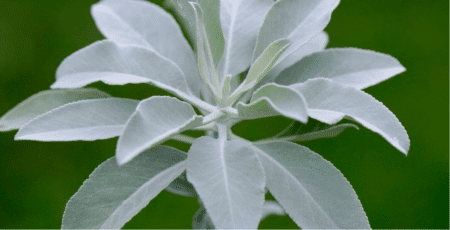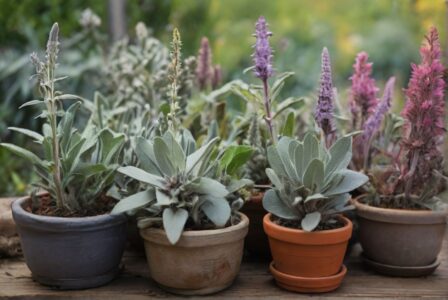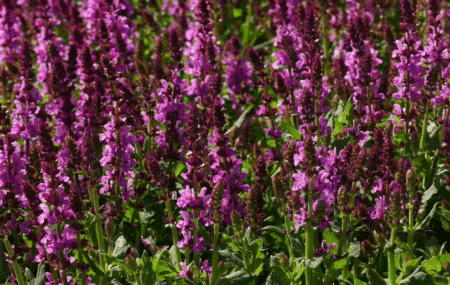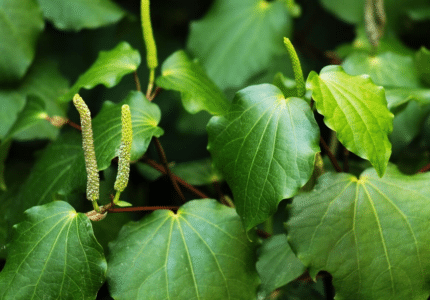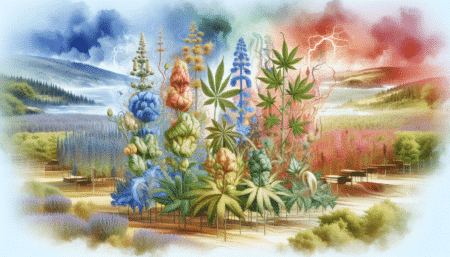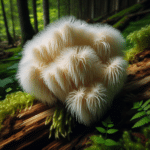- What is Salvia apiana?
- Where is white sage found?
- The botanical structure of Salvia apiana
- The importance of Salvia apiana in different cultures
- How is white sage used?
- The health benefits of Salvia apiana
- Growing and caring for white sage
- Tips for harvesting and drying the cabbage
- Possible uses for white sage in everyday life
- Conclusion: Why you should get to know white sage
Here you can find our Salvia apiana seeds!
Salvia apiana - The white sage
Salvia apiana, also known as white sage, is a versatile plant with a fascinating history. It is native to the arid regions of North America and plays an important role in various cultures. In this blog article, you will learn all about the botanical structure of Salvia apiana, its uses in everyday life and the health benefits it can offer. You will also receive tips on growing and caring for white sage and find out how to harvest and dry the herb correctly. Let's delve into the fascinating world of white sage together and find out why you should definitely get to know it.
1 What is Salvia apiana?
Salvia apiana, also known as white sage, is a plant species from the labiate family. It originates from western North America, where it grows mainly in the dry areas of California and Arizona. White sage is a perennial plant that can grow up to one meter tall and has silver-grey leaves. The flowers are white or purple in color and appear in summer. In many cultures, Salvia apiana has been used for spiritual purposes for centuries, as it is considered a sacred herb. The scent of white sage is said to have a purifying effect and can dispel negative energies. The herb is also valued in naturopathy due to its antibacterial effect.
2. where is the white sage found?
White sage is a plant species that is mainly found in the south-western regions of the USA and Mexico. The plant prefers dry and sunny locations such as deserts, hills and mountainous regions. In the USA, it is most commonly found in California, where it is also known as the "sacred herb" and has been used by Native Americans for spiritual purposes for thousands of years. However, there are also reports of white sage from other regions such as Central America, South America or even Europe. Due to its beneficial effects on the body and mind, the use of white sage has spread across different cultures. Today, it is cultivated and used worldwide, especially in the aromatherapy industry as well as in the production of incense sticks or as an ingredient in teas and other food products.
3. the botanical structure of Salvia apiana
If you are interested in white sage, it is important to understand how this unique shrub is structured. Salvia apiana belongs to the labiate family and can grow up to 1.5 meters tall. The plant has silvery leaves that are covered in a thick layer of tiny hairs and exude a strong fragrance. The stems of the white sage are woody and can extend to the ground. The botanical structure of Salvia apiana also includes its inflorescences - small white or purple flowers that grow on long stems. These flowers are rich in nectar and attract many insects. Overall, the botanical structure of Salvia apiana is an important factor in its use in various crops and as a medicinal plant.
4 The importance of Salvia apiana in different cultures
Salvia apiana, also known as white sage, has a long history of use in various cultures. In the indigenous culture of North America, white sage was often used for ceremonial purposes and was considered a sacred herb. It was burned and the smoke used to drive away evil spirits and cleanse the aura of negative energies. Salvia apiana has also played an important role in other parts of the world - in some Asian countries, for example, it is used to treat inflammation. The significance of white sage therefore extends far beyond its use as a spice or medicinal herb, making it a fascinating plant with a rich cultural history.
5 How is white sage used?
White sage has been used for centuries by indigenous peoples in North America for ritual and medicinal purposes. It is an important part of the culture and tradition of many tribes who consider it a sacred herb. The leaves are often burned to dispel negative energy and attract positive energy. This process is also known as "smudging". Apart from ritual applications, white sage can also be used to treat conditions such as sore throats or inflammation. It contains antimicrobial agents that can help fight bacteria. In addition, inhaling the smoke from the burnt herb can have a soothing effect on respiratory diseases such as asthma or bronchitis. White sage is also being used more and more in everyday life - as a natural air freshener or to cleanse negative energy in rooms and objects.
6 The health benefits of Salvia apiana
White sage, also known as Salvia apiana, is a plant with numerous health benefits. The leaves of white sage contain a variety of nutrients and minerals such as vitamins A, C and E as well as calcium and iron. These ingredients can help to strengthen the immune system and reduce inflammation in the body. In addition, white sage is valued by many people for its calming effect. The essential oils in the leaves are often used to relieve stress, anxiety and insomnia. White sage can also help with colds or sore throats: Inhaling the smoke when burning the dried leaves can soothe the mucous membranes in the throat and nose area.
7. cultivation and care of white sage
If you are interested in growing and caring for white sage, you should know that this robust shrub thrives best in warm climates. White sage is a perennial plant that prefers dry soil and requires sufficient space. The ideal location for growing Salvia apiana is a sunny spot with well-drained soil. Before planting your seeds or seedlings, you should ensure that all weeds are removed and the soil is loose enough. Once your plants are growing, they will require minimal watering and no fertilization. If you follow these simple care tips, your white sage will grow healthily and produce an abundant harvest.
8. tips for harvesting and drying the cabbage
An important aspect of growing Salvia apiana is harvesting and drying the herb. If you want to harvest the herb, it is best to do so on a sunny day when the dew has cleared. Cut the branches with sharp scissors or a knife to avoid damaging them. Make sure you don't cut off too much and always leave enough leaves for the plant to continue growing. After harvesting, you should wash the herb thoroughly and then hang it up to dry. Hang the branches in a dry place that is protected from direct sunlight. There should be good air circulation to prevent mold growth. After one to two weeks, the branches should be completely dry. When the herb is completely dry, you can break it into small pieces and store it in an airtight container. This way, the herb will keep for a long time and retain its active ingredients. The correct harvesting and drying of white sage is crucial for good quality herbs. With these tips, you can ensure that your home-grown white sage is perfect for use in incense or as a medicinal herb.
9. possible uses for white sage in everyday life
There are various uses for white sage in everyday life that are not limited to spiritual rituals. One well-known area of application is incense burning to draw out negative energies and attract positive vibrations. However, white sage can also be used as a tea or spice in the kitchen. The essential oils it contains give the herb a characteristic flavor and also have an antibacterial and anti-inflammatory effect. Salvia apiana is also used in naturopathy, for example for sore throats or gastrointestinal complaints. The herb can also be used as a bath additive and has a relaxing effect on body and mind. White sage therefore offers numerous possibilities for integrating it into everyday life and benefiting from its health benefits.
10.conclusion: Why you should get to know white sage
If you haven't heard much about white sage yet, you should definitely get to know it. This herb is not only beautiful to look at and pleasant to smell, but it also has many positive properties for your health and well-being. White sage has been used in naturopathy and spiritual practices for centuries and has a special significance in various cultures. It can help you to reduce stress, clear your mind and purify your indoor air of negative energies. White sage also offers many culinary possibilities for preparing delicious dishes. So if you are interested in natural remedies or are simply curious about new taste experiences, you should definitely give white sage a try. With a few tips on care and harvesting, you can even grow and harvest it yourself - so you always have fresh sage to hand!
Note: The information in this article is for informational purposes only and is not intended to replace the advice of a physician or other healthcare professional. Always consult a doctor before using any new herbs or supplements. Furthermore, you should always check whether certain plants are permitted in your country before growing them.

